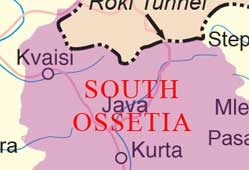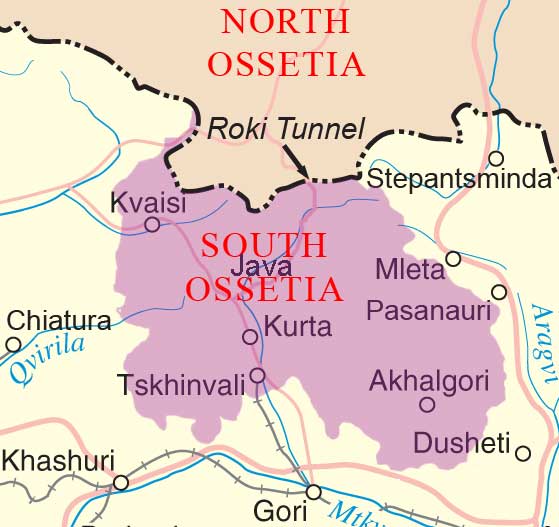Russia Started the Georgian War – Analysis

A Russian blogger has analyzed an interview of a Russian company commander, who was wounded in the war over South Ossetia. Russian troops, he finds, were on South Ossetian soil before Georgia began shelling Tskhinvali.
The blogger’s conclusions coincide with a detailed report by Michael Totten, titled “The Truth About Russia in Georgia,” and question the widely reported conclusion that Georgia acted the aggressor in the conflict.
—
Interview with a wounded company commander from the 135th motorized rifle regiment, in “Red Star,” [a Russian military newspaper]
“We were doing exercises,” captain Sidristy’s story starts. “This was relatively close to the capital of South Ossetia. Nizhny Zaramakh is a wilderness area in North Ossetia. We made camp there after our scheduled exercises, but on August 7th, the order came to move out towards Tskhinvali. We were raised to a state of alarm, and went on the march. We arrived, settled in, and already on August 8th the fire came down with such force that many even lost their bearings. No, everyone understood that Georgia was preparing something, but it was hard to even imagine what we saw. Immediately after midnight, a massive shelling of the city and peacekeeping positions was started. They hit it from all types of weapons, including artillery rocket systems.”
[Full interview with Denis Sidritsy available from Red Star (Rus)]

Analysis by LiveJournal user davnym_davno
1.The regiment, which is permanently posted in the township of Prokhladny, close to Nalchik, [Kabardino-Balkar Republic], after finishing its exercises (August 2nd), was stationed to Nizhny Zaramag.
2.Nizhny Zaramag is located several kilometers from the northern entrance of the Roki tunnel, and a border station and customs office is located in this town.
3.On August 7th, the regiment received the order to move out toward Tskhinvali, was raised to a state of alarm, and before the end of the day, managed to arrive to its objective destination.
4.After midnight, the lights of the bombardment of Tskhinvali could be seen from the regiment’s position.
5.The site of the regiment’s position is not specified, but it is evident that the regiment passed through the Roki tunnel. Since:
*There would be no point in raising the regiment to a state of alarm to advance it two kilometers to the entrance of the Roki tunnel. With such a formation, the tail end of the column would still be in Nizhny Zaramag.
*Being located to the north of the Greater Caucasus Mountain Range [which the tunnel crosses], it would impossible to observe the lights of an artillery attack of Tskhinvali.
6.Going on the basis of the words, “we arrived, settled in,” one can draw the conclusion that the column did not as yet spend the night by the side of the road, but unloaded in a place where it was possible to provide the military personnel with food and a night’s rest.
7.Between the Roki tunnel and Tskhinvali, there is only one such place: Java.
Conclusion: the 135th motorized rifle regiment entered the territory of South Ossetia before the start of Georgia’s attack on Tskhinvali.
As is customary to say in such situations, ‘I rest my case, your honor!’
Georgia entered the war after Russia’s incursion onto its territory, in order to avert the threat of the country’s takeover, and forced regime change. In these circumstances, the attack on Tskhinvali was a tactical military objective, aimed at holding the enemy at bay in Java until the rest of the world reacted to what had happened.
The Georgian armed forces handled their objective even better that I expected. And you know yourselves what happened afterwards.
translation by theotherrussia.org
